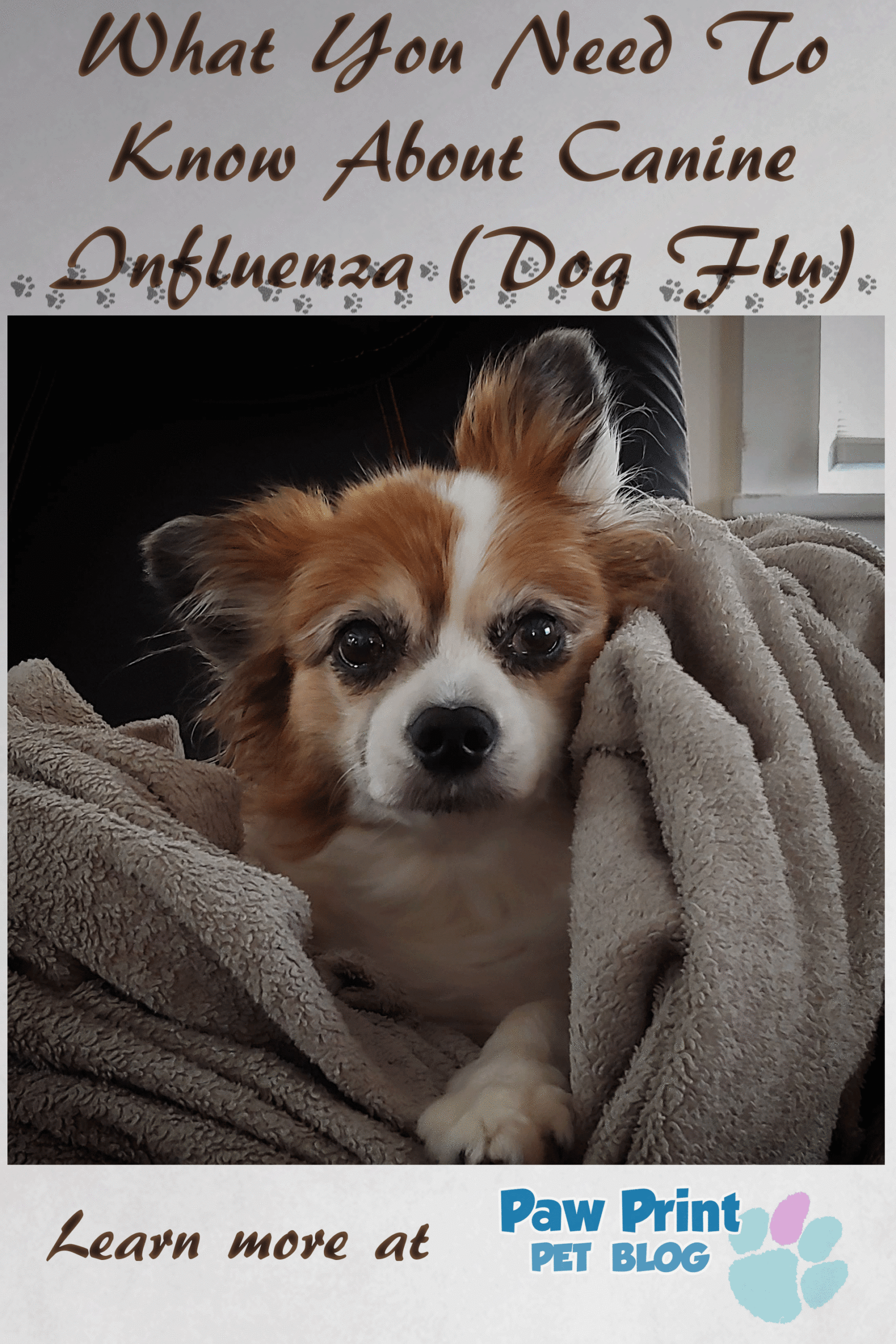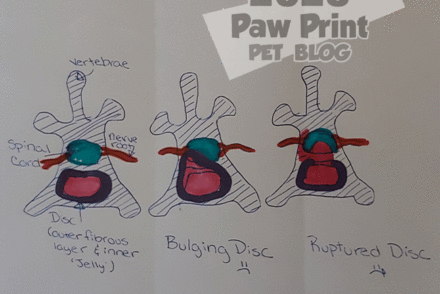It’s flu season! The other week I posted about research that suggests that, on rare occasions, pets can in fact catch the flu from their human counterparts. The instances of pets contracting the flu from their humans may be very low, but, as many dog owners probably already know, dogs have their own strains of the flu to worry about too. Is your furry friend at risk of contracting canine influenza? What are the symptoms of dog flu, and are there any precautions pet owners can take to help their pets to avoid becoming sick? Read on to find out!
Post Contents:
The Two Types of Canine Influenza
 There are currently two strains of the flu virus that commonly affect dogs. The first is caused by A(H3N8), a virus strain that was discovered to cause disease in dogs for the first time in 2004. It was first seen in racing dogs in Florida. It is believed that this strain of canine influenza mutated from the strain that causes equine (horse) flu.
There are currently two strains of the flu virus that commonly affect dogs. The first is caused by A(H3N8), a virus strain that was discovered to cause disease in dogs for the first time in 2004. It was first seen in racing dogs in Florida. It is believed that this strain of canine influenza mutated from the strain that causes equine (horse) flu.
A slightly newer strain of the flu to impact dogs, A(H3N2) was first detected in 2007. It seems to have originated in South Korea but has since spread. It was first found to be affecting dogs in the US in 2015. This strain of canine influenza originated in birds, then mutated to also be able to infect dogs.
Neither strain of canine influenza has shown any signs of being able to infect people. Although, as I mentioned above, the human strain of the flu can, on very rare occasions, infect pets (cats and dogs).
Is Your Dog At Risk of Catching the Dog Flu?
Dogs who spend a lot of time around other dogs are most at risk of developing canine influenza. Like the human flu, dog flu is spread through respiratory secretions. Symptoms range from very mild to severe, with the most common signs being coughing, sneezing, fever, nasal discharge, loss of appetite, lethargy, and labored breathing. Not all dogs exposed to the virus show clinical signs of being sick, while others may be severely impacted. In some instances, canine flu can lead to pneumonia which can, if left untreated, be fatal.
What is the Treatment for Canine Influenza?
Because dog flu is caused by a virus, there is no one medication available to cure it. The main form of treatment is to provide supportive care while your dog’s body fights off the virus. Treatment can include cough suppressants to manage symptoms, healthy food to boost the immune system, and plenty of rest. It’s also important to make sure impacted pets do not become dehydrated, and to monitor them to make sure they do not develop pneumonia or secondary bacterial infections.
What About the Flu Vaccine?
There is currently a dog flu vaccine available. The first year the vaccine is given it must be administered twice. The second dose should be given 2 to 4 weeks after the first. After that, annual revaccination (1 dose per year) can be given. However, the vaccine does not guarantee that your dog will not contract the flu. Like the human flu vaccine, it can lessen the severity of flu symptoms but doesn’t necessarily prevent dogs from catching the virus.
Flu Prevention
Pet owners (like myself) who take a conservative approach to vaccines should note that canine flu is most common in dogs in environments where there are many dogs living closely together, such as in shelters, pet stores, kennels, etc. Most dogs who contract the flu get better on their own, and require nothing more than minimal supportive care. The death rate is thought to range from 1% – 5%. However, deaths are most commonly caused by untreated secondary bacterial infections, such as phenomena, and not the flu virus itself.
Pet owners can lower the risk of disease by keeping their pet’s immune systems strong.
Feed healthy, species appropriate, diets, and make sure your pet receives plenty of fresh air and exercise! Avoid, whenever possible, areas were a lot of unknown dogs frequent such as dog parks, kennels, etc. If you suspect that your dog may have the flu, or any other illness, be considerate of others and keep your dog at home. Talk to your veterinarian if your pet becomes sick and symptoms are severe, get increasingly worse, or do not seem to be improving on their own.
Has your dog ever contracted the flu?
Comment below! I’ve been lucky so far (knock on wood) that in my 13+ years of owning dogs I’ve never had one catch canine influenza. Still, I think it’s important to know the symptoms, and ways you can potentially reduce your dog’s chances of exposure. I hope your pets (and you!) are able to avoid getting sick this flu season. Stay healthy everyone!

To reduce the risk of your dog contracting dog flu, follow good
infection control practices. Avoid letting your dog drink from communal
water bowls (such as those located at parks, cafes or pet shops). Be
aware of any outbreaks in your local community and if an outbreak occurs
in an area you frequent, avoid exposing your dog to that area
temporarily. If you plan to leave your dog at a boarding facility or
kennel ask whether respiratory disease has been a problem and if they
have a plan of action for any potential cases that may arise.
If
your dog is involved in shows, sports and other activities where he or
she interacts with lots of other dogs regularly you may consider
vaccination. There may be other considerations regarding your dog’s
health (e.g. pre-existing medical condition) that also may warrant
administering a preventative vaccine. Consult your veterinarian about
the vaccination. Like the human vaccine, it may not prevent entirely,
but may lessen the severity and duration of the flu. Vaccinated dogs
will also have a shorter contagious period. The current vaccine must be
given twice initially with a two-week break, then annually thereafter.
Because any vaccine can have negative side effects on some dogs, many
dog owners choose not to vaccinate. Most dogs recover from the flu with
mild symptoms, and research indicates that dogs that has recovered from
canine influenza appear to have boosted immunity for at least two years.





No Comments